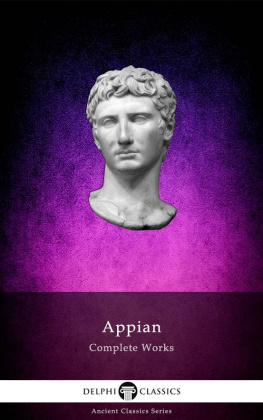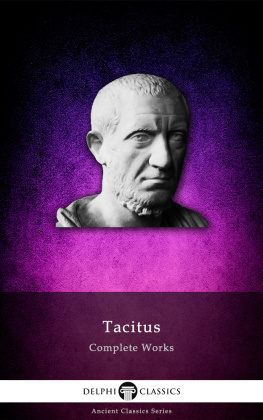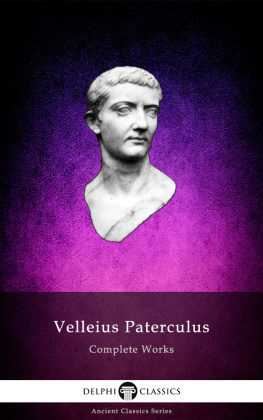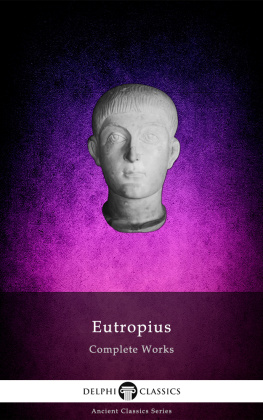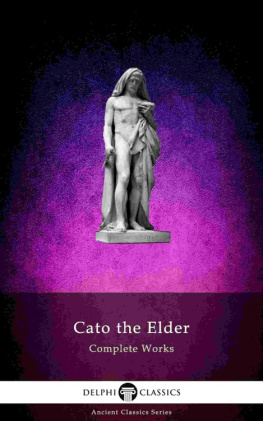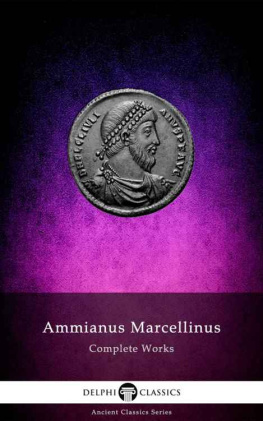
The Complete Works of
PLINY THE ELDER
(AD 23-AD 79)

Contents

Delphi Classics 2015
Version 1

The Complete Works of
GAIUS PLINIUS SECUNDUS

By Delphi Classics, 2015
COPYRIGHT
Complete Works of Pliny the Elder
First published in the United Kingdom in 2015 by Delphi Classics.
Delphi Classics, 2015.
All rights reserved. No part of this publication may be reproduced, stored in a retrieval system, or transmitted, in any form or by any means, without the prior permission in writing of the publisher, nor be otherwise circulated in any form other than that in which it is published.
Delphi Classics
is an imprint of
Delphi Publishing Ltd
Hastings, East Sussex
United Kingdom
Contact: sales@delphiclassics.com
www.delphiclassics.com
The Translations

Como, Lombardy, Italy Pliny the Elders birthplace
NATURAL HISTORY

Translated by John Bostock and Henry Thomas Riley, 1855
One of the largest single works to have survived antiquity, Plinys Natural History is an early encyclopaedia, not only limited to what is today understood by the term natural history, but covering many different subjects, which the author himself defined as the natural world or life. Divided into 37 books, these subjects include astronomy, mathematics, geography, ethnography, anthropology, human physiology, zoology, botany, agriculture, horticulture, pharmacology, mining, mineralogy, sculpture, painting and precious stones. The Natural History became a model for later encyclopaedias and scholarly works as a result of its sheer breadth of subject matter, its referencing of original authors and its index method. Pliny dedicated the book to the emperor Titus, the son of his close friend, the emperor Vespasian, in the first year of Tituss reign. It is the only work by Pliny to have survived and the last that he published. He began the Natural History in AD 77, and had not made a final revision at the time of his death during the 79 eruption of Vesuvius.
Pliny combined his scholarly activities with a busy career as an imperial administrator for Vespasian and a majority of his writing was completed at night, as daytime hours were spent working for the emperor, which he explains in the dedicatory preface. As for the nocturnal hours spent writing, these were not regarded as loss of sleep, but as an addition to life: for, as he states, Vita vigilia est , to be alive is to be watchful, in a military metaphor of a sentry keeping watch in the night.
Nature for Pliny was divine, a pantheistic concept inspired by the Stoic philosophy underlying much of his thought. But the deity in question was a goddess whose main purpose was to serve the human race: nature, that is life is human life in a natural landscape. After an initial survey of cosmology and geography, Pliny commences his treatment of animals with the human race, for whose sake great Nature appears to have created all other things. This teleological view of nature was common in antiquity and is crucial to the understanding of Plinys work. The components of nature are not only described in and for themselves, but also with a view to their role in human life. Pliny devotes a number of the books to plants, with a focus on their medicinal value; the books on minerals include descriptions of their uses in architecture, sculpture, painting and jewellery.
Plinys work frequently reflects Romes imperial expansion, which brought new and exciting things to the capital: exotic eastern spices, strange animals to be put on display or herded into the arena, even the alleged phoenix sent to the emperor Claudius in AD 47 although, as Pliny admits, this was generally acknowledged to be a sham. Pliny repeated Aristotles maxim that Africa was always producing something new. Natures variety and versatility were claimed to be infinite: When I have observed nature she has always induced me to deem no statement about her incredible. This led Pliny to recount rumours of strange peoples on the edges of the world. These monstrous races the Cynocephali or Dog-Heads, the Sciapodae, whose single foot could act as a sunshade, the mouthless Astomi, who lived on scents were not strictly new. They had been mentioned by the Greek historian Herodotus in the 5th century BC, but Pliny made them better known.
Pliny studied the original authorities on each subject, taking great care to make excerpts from their pages. His indices auctorum sometimes list the authorities he actually consulted, though not exhaustively; in other cases, they cover the principal writers on the subject, whose names are borrowed second-hand for his immediate authorities. He acknowledges his obligations to his predecessors: To own up to those who were the means of ones own achievements. In his preface, he claims to have stated 20,000 facts gathered from some 2,000 books and from 100 select authors. The extant lists of his authorities cover more than 400, including 146 Roman and 327 Greek and other sources of information. The lists generally follow the order of the subject matter of each book.
Plinys writing style emulates Seneca, aiming less at clarity and vividness than at epigrammatic point. His writing contains many antitheses, questions, exclamations, tropes, metaphors and other mannerisms typical of the Latin Silver Age. His sentence structure is often loose and straggling, adopting the heavy use of the ablative absolute, while ablative phrases are often appended in a kind of vague apposition to express the authors own opinion of an immediately previous statement.
Pliny wrote the first ten books of his magnum opus in AD 77 and was engaged on revising the rest during the two remaining years of his life. The work was probably published with some revision by the authors nephew Pliny the Younger, who, when telling the story of a tame dolphin and describing the floating islands of the Vadimonian Lake thirty years later, had apparently forgotten that both are to be found in his uncles work.
The absence of the authors final revision explains many errors, including why the text bears a disjointed order and corrupt state. There are approximately 200 extant manuscripts, but the best of the more ancient manuscripts, held at Bamberg State Library, contains only books XXXIIXXXVII. Natural History was one of the first classical manuscripts to be printed, at Venice in 1469 by Johann and Wendelin of Speyer.

Vespasian (AD 9-79) was Roman Emperor from AD 69 to 79. He founded the Flavian dynasty that ruled the Empire for twenty-seven years. The emperor originally came from an equestrian family that rose into the senatorial rank under the JulioClaudian emperors.
Next page



